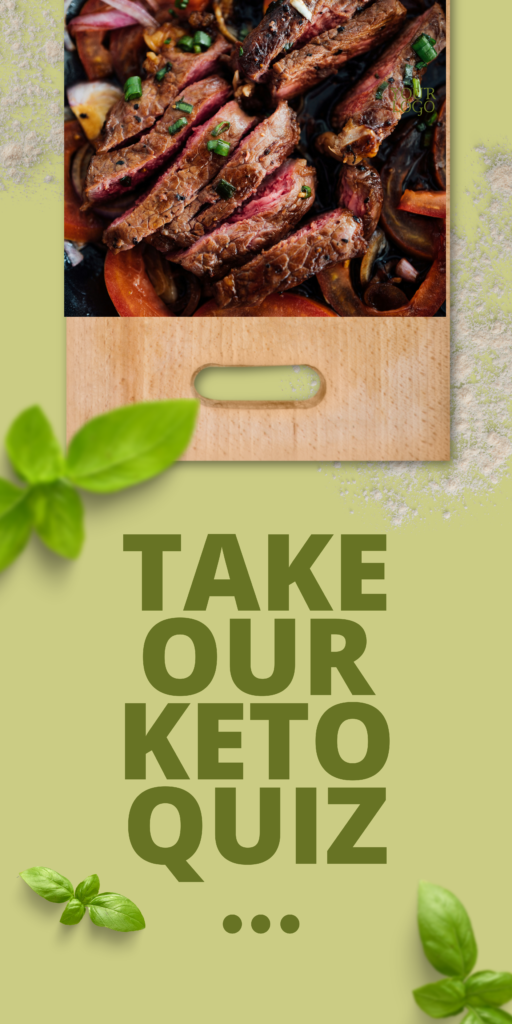
Detailed Diet Plan for FAST Fat Loss – Ketogenic Diet
Learn More About Keto ACV gummiesHere are seven tips for a detailed diet plan for fast fat loss using the ketogenic diet:
- Calculate Your Macros:
- Determine your daily macronutrient intake based on your weight, activity level, and goals. In a ketogenic diet, the typical breakdown is high fat (70-75% of total calories), moderate protein (20-25%), and low carbohydrates (5-10%).
- Choose Healthy Fats:
- Opt for healthy fats such as avocados, olive oil, coconut oil, and nuts. These fats not only provide energy but also contain essential nutrients. Limit saturated and trans fats.
- Quality Protein Sources:
- Include lean protein sources like poultry, fish, eggs, and tofu. Be mindful of the protein intake to prevent excessive protein consumption, as excess protein can be converted into glucose, potentially hindering ketosis.
- Select Low-Carb Vegetables:
- Focus on non-starchy vegetables like leafy greens, broccoli, cauliflower, and zucchini. These vegetables are low in carbohydrates and rich in fiber, providing essential vitamins and minerals.
- Monitor Carb Intake:
- Keep total daily carbohydrate intake under 20-50 grams to maintain a state of ketosis. Avoid high-carb foods like grains, legumes, and most fruits, and carefully read food labels to identify hidden sugars.
- Stay Hydrated:
- Adequate hydration is crucial. Drink plenty of water throughout the day to help with digestion, energy levels, and to alleviate potential side effects like the “keto flu.” Consider adding electrolytes, especially during the initial stages of the diet.
- Plan Meals and Snacks:
- Plan your meals and snacks in advance to ensure you are meeting your macronutrient goals. This helps prevent impulsive eating and ensures you have keto-friendly options readily available.
Remember, it’s essential to consult with a healthcare professional or a registered dietitian before starting any new diet, especially one as specific as the ketogenic diet. They can provide personalized advice based on your individual health needs and goals. Additionally, listening to your body and making adjustments as needed is crucial for long-term success on any diet plan.
Learn More About Keto ACV gummiesKeto for Beginners – 5 Ingredient Keto Meal Plan #2-How to start Keto-Free Keto Meal Plan
Here are some tips for beginners starting the ketogenic diet:
Tips for Beginners:
- Understand the Basics:
- Familiarize yourself with the fundamental principles of the ketogenic diet, which involves high fat, moderate protein, and low carbohydrate intake. The goal is to enter a state of ketosis, where your body burns fat for fuel instead of carbohydrates.
- Clean Out Your Kitchen:
- Remove high-carb foods from your kitchen to avoid temptations. Stock up on keto-friendly ingredients like healthy fats, low-carb vegetables, and quality protein sources.
- Meal Prep:
- Plan your meals ahead of time to ensure you have keto-friendly options readily available. Meal prepping can save time and make it easier to stick to your dietary goals.
- Stay Hydrated and Monitor Electrolytes:
- Drink plenty of water to stay hydrated, especially as the body tends to release water during the initial stages of ketosis. Additionally, consider supplementing with electrolytes to prevent imbalances and the “keto flu.”
- Gradual Transition:
- Ease into the keto diet gradually to allow your body to adapt. Consider reducing carbohydrate intake over a week or two rather than making drastic changes overnight.
Remember to adapt portion sizes based on your individual nutritional needs and consult with a healthcare professional or a registered dietitian before making significant changes to your diet.

30-Day EASY Keto Challenge (Full Meal Plan to Follow)
Participating in a 30-Day Easy Keto Challenge can offer various benefits for individuals looking to adopt the ketogenic lifestyle. Here are seven potential advantages:
- Weight Loss:
- The ketogenic diet is known for its effectiveness in promoting weight loss. By reducing carbohydrate intake and increasing fat consumption, the body enters a state of ketosis, leading to the burning of stored fat for energy.
- Increased Energy Levels:
- As the body transitions to using ketones for fuel instead of carbohydrates, many people experience more stable energy levels throughout the day. This can result in improved focus and reduced energy crashes.
- Improved Mental Clarity:
- Ketosis has been associated with enhanced cognitive function and mental clarity. Some individuals report improved concentration and mental sharpness when following a ketogenic diet.
- Stabilized Blood Sugar Levels:
- The low-carbohydrate nature of the ketogenic diet can help regulate blood sugar levels. This can be particularly beneficial for individuals with insulin resistance or those at risk of developing type 2 diabetes.
- Appetite Control:
- The increased intake of healthy fats and moderate protein can contribute to a feeling of satiety, helping to control hunger and reduce overall calorie intake. This can be advantageous for those aiming to manage their appetite and food cravings.
- Better Sleep Quality:
- Some individuals on the ketogenic diet report improvements in sleep quality. Stable blood sugar levels and reduced inflammation may contribute to a more restful night’s sleep.
- Positive Metabolic Changes:
- The ketogenic diet has been linked to positive metabolic changes, including improved lipid profiles and increased levels of high-density lipoprotein (HDL) cholesterol. These changes may contribute to better cardiovascular health.
Remember to stay hydrated, monitor your electrolyte intake, and consult with a healthcare professional before starting any significant dietary changes, especially if you have underlying health conditions. The meal plan should be adjusted based on individual nutritional requirements and preferences.
Learn More About Keto ACV gummiesA Guide To Keto|Weight Loss|Diet Plan
- Low-Carbohydrate, High-Fat Eating Plan:
- The ketogenic (keto) diet is characterized by a significant reduction in carbohydrate intake and an increase in dietary fats.
- Inducing Ketosis:
- The primary goal of the keto diet is to induce a metabolic state called ketosis, where the body shifts from using carbohydrates to burning fat for energy.
- Fat as the Primary Fuel Source:
- In ketosis, the body relies on fat as its primary fuel source, breaking down stored fat into ketones, which are used for energy instead of glucose.
- Rapid Weight Loss:
- The keto diet is renowned for its ability to promote rapid weight loss by encouraging the body to burn stored fat efficiently.
- Metabolic Health Improvement:
- Beyond weight loss, the keto diet aims to enhance metabolic health, potentially improving factors such as insulin sensitivity and blood sugar control.
- Drastic Reduction in Carbs:
- Carbohydrate intake is drastically reduced, typically to around 5-10% of total daily calories, to maintain a state of ketosis.
- Increased Fat Consumption:
- The diet encourages a higher intake of healthy fats, such as avocados, olive oil, and nuts, making up about 70-75% of total daily calories.
Starting a ketogenic (keto) diet can be a significant lifestyle change, but with careful planning and understanding, it can lead to successful outcomes. Here are some tips for beginners on a keto diet:
- Educate Yourself:
- Learn about the principles of the ketogenic diet. Understand the macronutrient ratios (high fat, moderate protein, low carbs) and how ketosis works.
- Clean Out Your Kitchen:
- Remove high-carb foods from your kitchen to avoid temptation. Stock up on keto-friendly staples like healthy fats, low-carb vegetables, and quality protein sources.
- Plan Your Meals:
- Plan your meals and snacks in advance to ensure you meet your macronutrient goals. Meal prepping can make it easier to stick to your dietary plan.
- Monitor Your Macros:
- Use a food tracking app to monitor your macronutrient intake. This helps you stay within the recommended keto ratios and ensures you’re on track.
- Stay Hydrated:
- Drink plenty of water throughout the day, as the keto diet can lead to increased water loss. Adequate hydration is crucial for overall health and well-being.
- Include Quality Fats:
- Focus on healthy fats such as avocados, olive oil, coconut oil, nuts, and seeds. Avoid trans fats and limit saturated fats.
- Choose Quality Protein Sources:
- Opt for lean protein sources like poultry, fish, eggs, and tofu. Be mindful of protein intake to avoid excess, which can be converted into glucose and potentially hinder ketosis.
- Incorporate Low-Carb Vegetables:
- Include non-starchy vegetables like leafy greens, broccoli, cauliflower, and zucchini in your meals. These provide essential nutrients and fiber.
- Watch Your Electrolytes:
- During the initial stages, you may experience a “keto flu” with symptoms like fatigue and headaches. Replenish electrolytes with supplements or by including foods like salted broth and leafy greens in your diet.
- Be Patient and Listen to Your Body:
- The transition to ketosis can take time, and everyone’s body reacts differently. Be patient and listen to your body’s signals. If you’re feeling unwell, consult with a healthcare professional.
- Read Food Labels:
- Be vigilant about reading food labels to identify hidden sugars and carbohydrates in packaged foods. Many seemingly “low-carb” products may still contain ingredients that can impact ketosis.
- Seek Support:
- Join online forums or communities where you can connect with others following a keto lifestyle. Sharing experiences and getting advice can be helpful, especially for beginners.
Before starting any new diet, including the ketogenic diet, it’s advisable to consult with a healthcare professional or a registered dietitian, especially if you have underlying health conditions. They can provide personalized guidance based on your individual needs and goals.
Learn More About Keto ACV gummiesWhat I Eat in a Day KETO and Intermittent Fasting + ANNOUNCEMENT!
1. FASTING KETO BREAKFAST – Vegan Bulletproof Coffee:
- Bulletproof coffee is a popular choice for those on the keto diet. Ensure your coffee is high-quality, and the vegan version could include coconut oil or MCT oil and vegan butter or coconut butter. This provides healthy fats to kickstart your metabolism without breaking your fast.
2. EASY KETO LUNCH – Burger-Inspired Cauliflower Rice Bowl w/ Homemade Avocado Oil Mayo:
- Cauliflower rice is an excellent low-carb alternative, and using it as a base for a burger-inspired bowl adds texture and flavor. Homemade avocado oil mayo is a great choice for healthy fats. Include keto-friendly veggies like lettuce, tomatoes, and pickles for added nutrients.
3. MEAL PREP KETO DINNER – Spicy Mayo Baked Salmon w/ Foil Packet Keto Vegetables:
- Baked salmon is a fantastic protein source, and the addition of spicy mayo can enhance the flavor. Foil packet vegetables make for easy meal prep, and you can include low-carb options like broccoli, bell peppers, and zucchini.
4. KETO SNACKS / SWEETS – Coconut Lime Fat Bombs:
- Fat bombs are a satisfying and delicious way to meet your fat intake. The combination of coconut and lime gives a tropical twist. Ensure they are portioned appropriately to fit your daily macronutrient goals.
Additional Tips:
- Stay hydrated throughout the day, especially when incorporating fasting.
- Monitor your portion sizes to align with your daily macronutrient targets.
- If you’re new to fasting, start with shorter fasting periods and gradually increase the duration based on how your body responds.
Remember, individual nutritional needs may vary, and it’s crucial to listen to your body. If you have any underlying health concerns or dietary restrictions, consult with a healthcare professional or a registered dietitian for personalized advice. Enjoy your keto meals!
Learn More About Keto ACV gummiesKeto Weight Loss Guide-Keto Diet for Beginners
Here are seven essential tips for beginners embarking on a keto weight loss journey:
- Understand the Basics of Keto:
- Before diving in, educate yourself on the fundamentals of the keto diet. Understand the concept of ketosis, where the body uses ketones for energy instead of glucose. Familiarize yourself with keto-friendly foods and those to avoid.
- Prioritize Healthy Fats:
- Focus on incorporating healthy fats into your diet, such as avocados, olive oil, nuts, and fatty fish. These fats are essential for satiety and provide a steady source of energy on a low-carb diet.
- Moderate Protein Intake:
- While protein is crucial for muscle maintenance and repair, excessive intake can potentially hinder ketosis. Ensure a moderate and balanced consumption of protein sources like meat, eggs, and dairy.
- Mind Your Carbohydrates:
- Strictly limit your carbohydrate intake, primarily deriving them from non-starchy vegetables. Track your net carbs (total carbs minus fiber) to stay within your daily keto range, typically 20-50 grams.
- Stay Hydrated and Monitor Electrolytes:
- Drinking plenty of water is crucial on the keto diet, as it helps with hydration and mitigates the risk of constipation. Additionally, be mindful of electrolyte levels, as reduced carbohydrate intake may affect sodium, potassium, and magnesium levels.
- Plan and Prepare Meals:
- Meal planning is key to staying on track. Prepare keto-friendly meals in advance to avoid temptation or making unhealthy food choices when you’re hungry. Batch cooking and having keto snacks readily available can help maintain consistency.
- Listen to Your Body:
- Pay attention to your body’s signals. Some people may experience the “keto flu” during the initial transition, which can include symptoms like fatigue and headaches. Be patient, and allow your body to adapt. If necessary, adjust your macronutrient ratios based on how you feel and your weight loss progress.
Remember that individual responses to the keto diet may vary, so it’s essential to tailor the approach to your specific needs and consult with a healthcare professional before making significant dietary changes.






